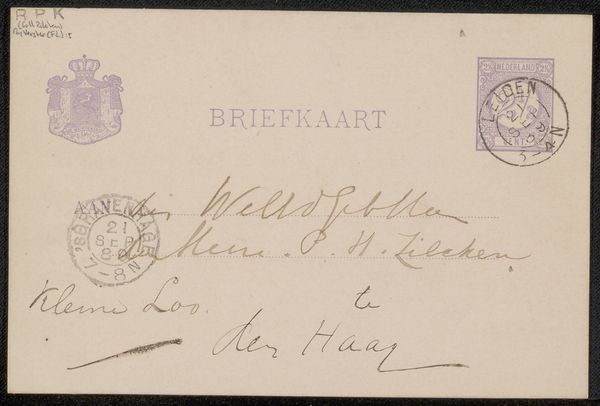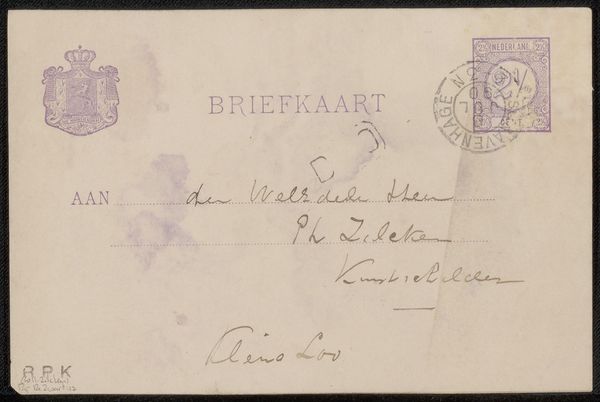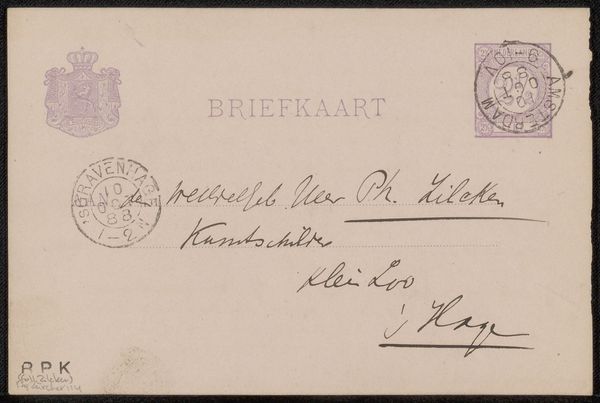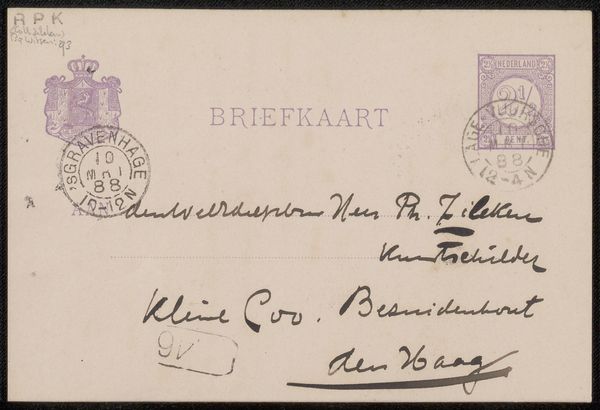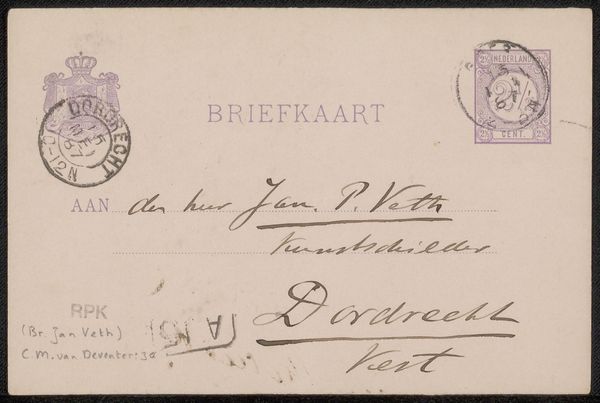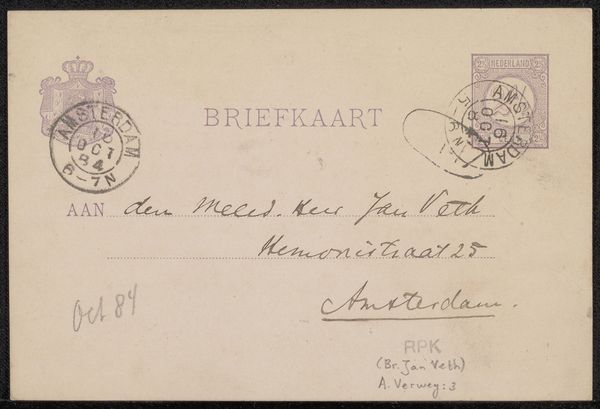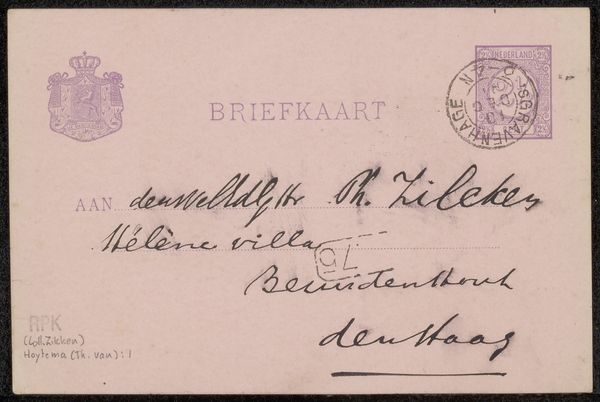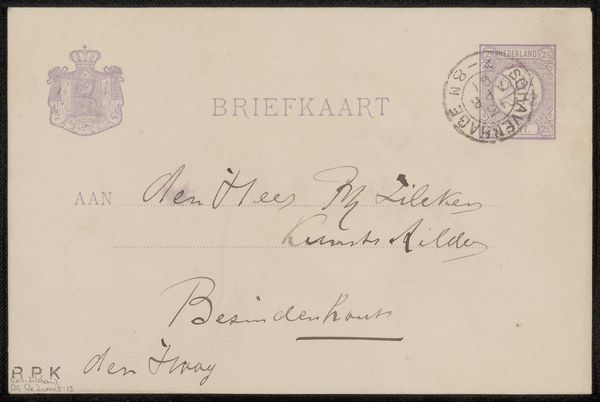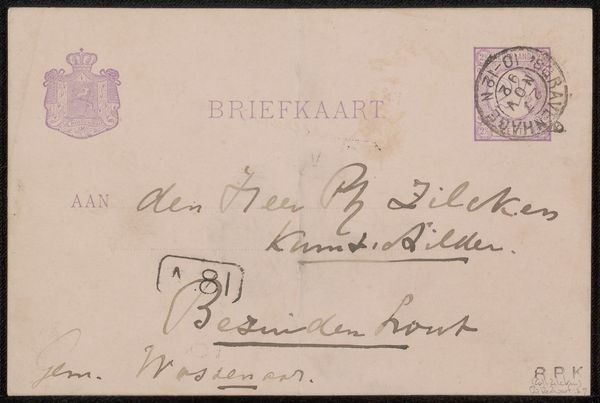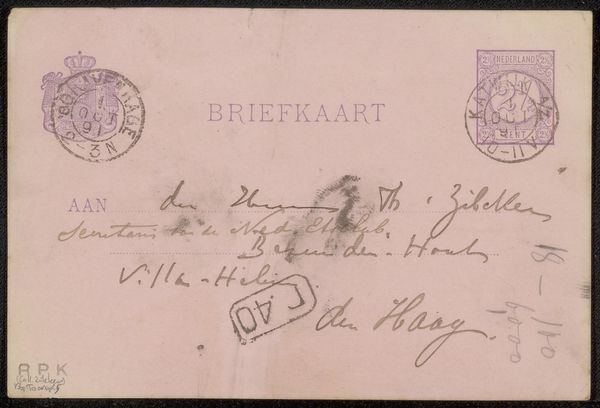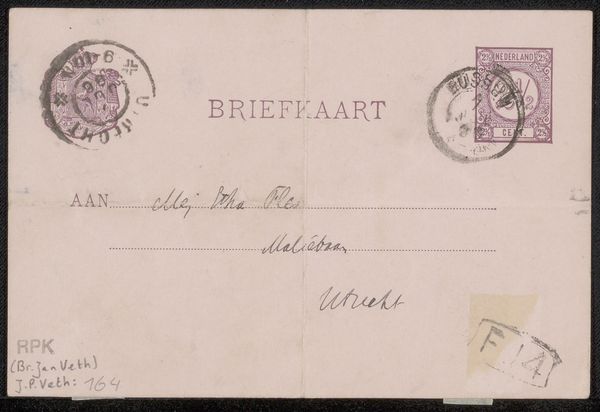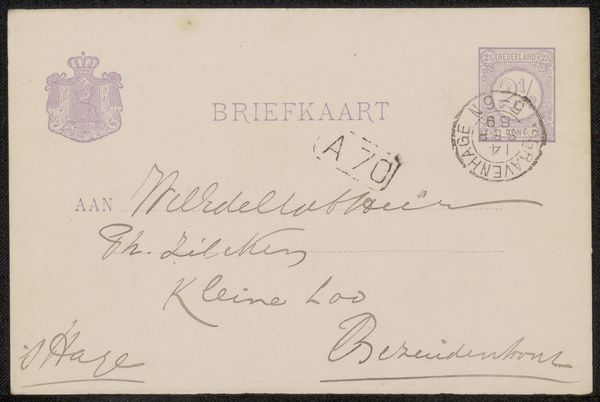
drawing, print, paper, ink
#
drawing
#
ink paper printed
# print
#
paper
#
ink
Copyright: Rijks Museum: Open Domain
Editor: This is "Briefkaart aan Philip Zilcken" – a postcard to Philip Zilcken - made before 1889 by Willem de Zwart, using ink on paper. It feels incredibly fragile and personal somehow, a whisper from the past. What symbolic weight might a simple postcard like this carry? Curator: Well, on the surface, it seems ordinary. But look closer. Consider the handwritten script. The very act of writing, not typing, implies a deliberate pace, a personal touch largely lost in our digital age. Each stroke becomes a tiny symbol of the writer's intent. Editor: So the handwriting itself is a symbol? Curator: Absolutely! The formality, even the flourish, tells us about social conventions of the time. Also, note the postmark. It's more than just a date; it's a validation of connection within a community and perhaps the desire to transcend geographic distance. Don’t you wonder what Kleine Loo might have meant to the sender? Editor: You're right. Kleine Loo is more than just a location. I am guessing there are some references to memories there. How much do the Dutch place names weigh? Curator: Heavily, since they serve as the cornerstones of identity, a sense of place embedded deeply within the Dutch consciousness. What may seem like a generic direction or instruction now to many may be embedded as social cohesion through a network of implied memories in that time. It is a subtle art to infer from just this little ink print. Editor: It is fascinating to consider that we still rely on symbolic shorthand even in this era of mass electronic communication, where emoticons and memes serve that need! Thanks. Curator: My pleasure. Examining art is just uncovering our intrinsic values in various creative formats.
Comments
No comments
Be the first to comment and join the conversation on the ultimate creative platform.
